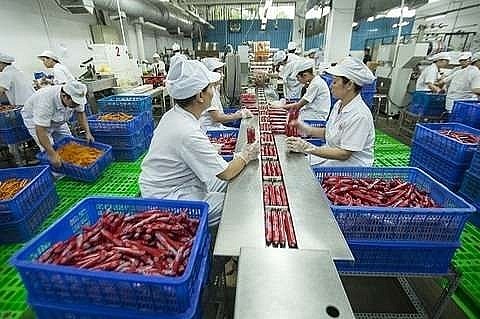The food processing and drinks industry have seen the growth of 7 percent in recent years, with more and more foreign investors deciding to pour money into the sector.

“The food and drinks sector is now taking the largest proportion of monthly spending for the Vietnamese, around 35 percent,” Pham Thanh Kien, director of HCM City Industry and Trade Department, was quoted as saying in the Sai Gon Giai Phong (Liberated Sài Gòn) newspaper.
In HCM City, food and drinks represented 17 percent of total retail revenue last year.
Export turnover for food processing and agricultural products totaled more than US$40 billion last year.
Vietnamese products have successfully reached many technical standards and quality barriers and are present in 200 countries, including the US, Japan, South Korea, and the EU.
For foreign investors, the abundance of agricultural products and foodstuff in the country is an advantage. Viet Nam is considered one of the top five food baskets in the world and one of the top 15 largest countries by agriculture exports.
The young population and the rising popularity of processed food are two other factors influencing investors’decisions.
For the last five years, many international food-processing companies have and expanded their production in Viet Nam.
In the coming time, the Government plans to withdraw its shares in major food processing and drink companies like Vinamilk or Habeco and create more opportunities for foreign investors.
Foreign investors have also invested in and expanded their trade centers, supermarkets, and convenience stores, which have all helped to increase the consumption of processed foods.
Multinational retailers like Circle K, 7-Eleven, B’s mart, Family Mart, MiniStop, Big C, Aeon, and Lotte now have a total of 3,000 convenience stores, 300 trade centers and supermarkets in Viet Nam.
“This also means more competitive pressure for the domestic food processing and drink manufacturers,” Ly Kim Chi, chairwoman of the HCM City Food and Foodstuff Association, said.
Currently, 98 percent of domestic manufacturers are small and medium size with limited financial resources and poor competitiveness.
“Foreign distributors and manufacturers have a strategy to dominate the Vietnamese market. Distributors have reduced expenditures to the producers, while the latter have dropped selling prices or increased promotions,” she said.
“Foreign distributors have also established barriers like quality and packaging standards and many others so they can refuse domestic products,” she added.
“To compete on the home ground, domestic enterprises must increase their production capability, quality and packaging to meet international standards,” Huynh Thanh Dien from HCM City’s University of Economics, said.
“For long-term development, domestic enterprises should join international supply chains. Authorities should also apply the same incentive policies for foreign and domestic companies,” he added.
Many foreign companies receive preferential treatment on land rent, taxes and technology imports.
“Authorities should also prevent unhealthy competition when foreign enterprises work together to try to eliminate local ones and engage in dumping practices,” he said.
Viet Nam has 5,500 food and drinks manufacturing enterprises, with 2,000 of them located in HCM City.
[content_block id=4039 slug=posts-footer]





